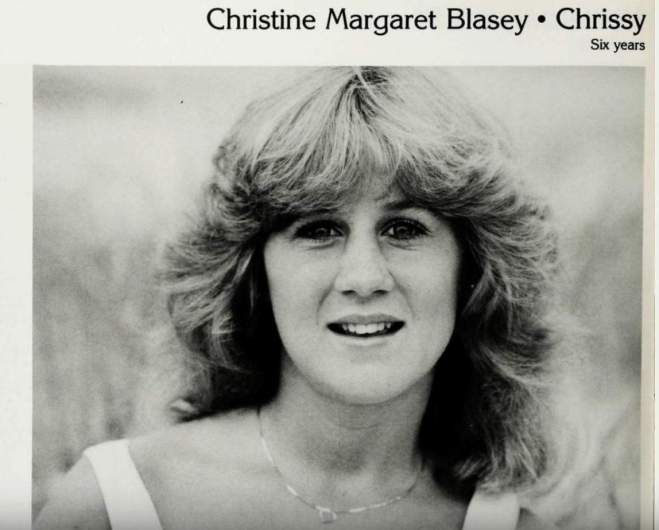
Getty/Palo Alto University Christine Blasey Ford and Brett Kavanaugh
Christine Blasey Ford, the accuser of Supreme Court nominee Brett Kavanaugh, once wore a knitted brain cap to a science march that was designed to look like the pink pussy hats that many women wore to protest President Donald Trump and advocate for women’s rights.
That’s according to a 2017 story in a local newspaper in California, which featured a photo of the hat along with the caption, “Pleasanton knitter Eilene Cross made ‘brain caps’ for the upcoming March for Science, to be worn by friend Christine Blasey of Palo Alto.”
In addition, The Mercury News reported that a friend of Ford’s says Ford attended a women’s march protesting Donald Trump.
The cap story is just one tiny piece of Ford’s biography, of course (you can read a full biography of Ford here). She is a Palo Alto professor who is a prolific researcher. It does help to provide more of a sense of her interests and, perhaps, her politics. Her accusation – described in detail to The Washington Post and denied by Kavanaugh and a fellow classmate of his whom Ford alleges was there – has upended an already contentious and politicized nomination. Brett Kavanaugh would replace centrist Anthony Kennedy on the highest court if he can get through a Republican-controlled (albeit slightly) Senate. The accusation dates to high school.
Here’s what you need to know about the brain hat story:
Blasey Described the March as a ‘Science Party’

Holton-Arms School YearbookChristine Ford’s 1984 yearbook picture.
A 2017 article in the San Jose Mercury News says that Blasey was planning to attend a science march wearing the knitted brain hat that was supposed to resemble the pussy hats.
“It’s a science party!” the article quotes “biostatistician Christine Blasey, of Palo Alto” as saying. The newspaper also quotes her as saying she was hoping more introverted people would go to the march. The story says she would “wear an elaborately knitted cap of the human brain — yarn turned into a supersized cerebral cortex — inspired by the ‘pussy hats’ donned during the Women’s Marches.” The article describes the science march as involving people, in general, who are “deeply worried that political leaders are ignoring scientific evidence, aren’t committed to fighting climate change and are calling for significant cuts to national science programs.” It didn’t specifically attribute those views to Blasey, though.
The story continued “This is a movement of the sensible-shoe’d majority, people who carefully pack snacks, wear sunscreen and reduce their environmental footprint at the marches by buying carbon offsets from nonprofits like The Nature Conservancy.”
Technically, the march was called the March for Science San Francisco. The march website describes it as a non-partisan event, reading, “The March for Science champions robustly funded and publicly communicated science as a pillar of human freedom and prosperity. We unite as a diverse, nonpartisan group to call for science that upholds the common good, and for political leaders and policymakers to enact evidence-based policies in the public interest.” The Mercury News story started with an anecdote about a march speaker (not Blasey) who is angered by Trump administration proposed cuts to research.
Although her married name is Christina Blasey Ford, she uses Christine Blasey professionally in many cases.
Christine Blasey Ford Is a Professor in California Who Has Authored Dozens of Journal Articles
Ford works as a professor at Palo Alto University and teaches in consortium with Stanford University. She has written or helped write more than 50 journals, book chapters, and other articles. One study focused on trauma as a result of the September 11, 2001 terrorist attacks.
The Washington Post reports that she is a “registered Democrat who has made small contributions to political organizations.” She also signed a letter speaking out against Donald Trump’s family separation policy at the border.
Her donations have been earmarked for Bernie Sanders, the Democratic National committee and the Democratic Congressional Campaign Committee. The amounts were small.



Here is a link to her scholarly works.
Christine Ford has deleted her social media pages, but an archive of an old LinkedIn page gives these past positions for her:
Consultant. The Brain Resource Company Jul. 1, 2013 – Sep. 1, 2013
Professor Pgsp-stanford School Of Medicine Collaborative Clinical Psychology Program
Consultant. Titan Pharmaceuticals Jan. 1, 2012 – Dec. 31, 2013
Director of statistics. Corcept Therapeutics Pharmaceuticals Jul. 1, 2006 – Aug. 1, 2012
Research psychologist. Stanford University Department Of Psychiatry Research Jul. 1, 2004 – Aug. 1, 2012
Psychologist. Children’s Health Council Mental health care Apr. 1, 1998 – Aug. 1, 2002
Research psychologist. Stanford University Division Of Child Psychiatry Research Jan. 1, 1998 – Aug. 1, 2004
Visiting professor in psychology. Pepperdine University Higher education Sep. 1, 1995 – Apr. 1, 1998
LINKEDIN EDUCATION
Stanford University. MS, Epidemiology and Biostatistics January 1, 2007 – December 31, 2009
University of Southern California. PhD, Educational Psychology: Research Design January 1, 1991 – December 31, 1996
Pepperdine University. MA, Psychology: Clinical January 1, 1989 – December 31, 1991
University of North Carolina at Chapel Hill. BA, Psychology January 1, 1984 – December 31, 1988
Holton-Arms School. High School Diploma January 1, 1977 – December 31, 1984
READ NEXT: Mark Judge Biography